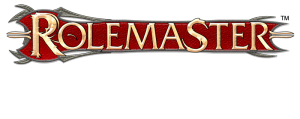def. The typical protagonist of a fantasy role-playing game, who is a homeless guy who goes around killing people and taking their stuff.
Due to the holidays I only have time for a quick blog, but thought I would delve into this a bit–especially since Thanksgiving is really the “Last Supper” before we went all Murder Hobo on the native Americans!
A lot of GM’s pride themselves on running games that focus on other narrative elements than just combat; but let’s be honest, players love combat and Rolemaster’s critical charts makes combat more immersive and ultimately rewarding. RPG’s reward MurderHobo behavior! Video games have further reinforced this style. Digital games, limited in part by the defined experience and finite sandbox, also tend to focus on conflict and combat as the primary mechanism for player gains and advancement.
Despite mechanisms like “Alignments”, religious constraints and the good v. evil meme, many PC groups default to “kill whatever you encounter and take their stuff”. We certainly played like that when we were younger and in almost every game session since there has been at least one group member that opts for combat before anything else. In a game system that has terrible monsters, cruel creatures and real evil, their needs to be little rationalization: bad monsters should be killed!
I tend to a more grayscale approach to morality in gaming and Shadow World lends itself well to that. Most encounters are with other humanoids and while many of them may be selfish, greedy or dangerous they are probably not evil in the purest sense. Generally, people act in self-interest.
So while a GM can design an adventure that focuses on non-combat elements, that doesn’t mean the players will stay on script. So, how can you build some constraints into your gaming group?
- Actions have consequences. Combat results in criticals, and criticals can result in serious or permanent damage. At lower levels PC’s may not have the resources to regenerate a limb. Certain injuries could cause stat loss (temp and permanent). Scars can reduce Ap. Healing costs $$$!
- There are fates worth than death. Even if they triumph over the PC’s, opponents may still be seriously injured and will need to seek refuge and healing. They may not necessarily delivery a “coup de grace” on the players, but they could certainly loot them and take their valuable stuff!
- One size DOES NOT fit all. I’m not a believer that magic armor, bracers, rings etc have inherent magical “resizing” ability. In fact, that sounds like a fairly high level ability to enchant into an object. My players don’t expect to simple loot and put in opponents armor and have it fit or work effectively. This reduces some of their impulse to kill anything with nice stuff.
- What’s in a name? Horses have brands, armor may have insignia or religious symbols, “named” weapons may have a reputation. Flaunting your opponents marked equipment may be problematic—PC’s could be considered thieves or looters!
Hey, I like combat as much as anyone but when you really think about it, the “murderhobo” concept defines PC’s. What are your thoughts?









